Not seasoning the water
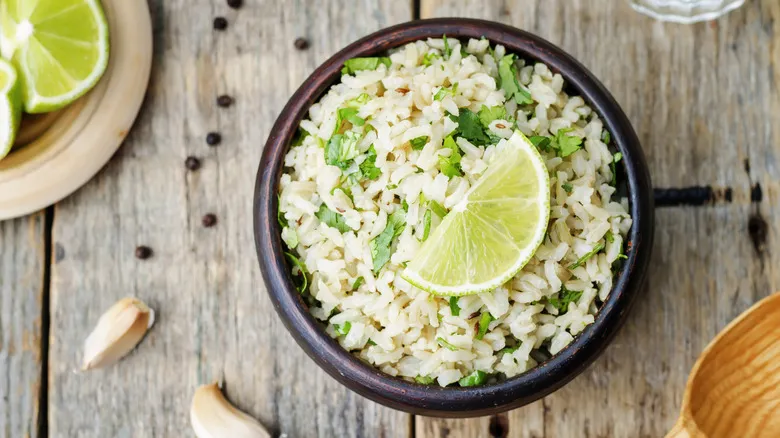
Garlic, rosemary, butter, and similar ingredients are among the herbs, spices, and flavorings that people often add to steamed rice after it’s cooked. However, there’s no need to wait until after cooking to enhance the flavor of your rice. By incorporating herbs and spices before steaming, you infuse the grains with delicious flavors, making them tasty right from the rice cooker. You can also elevate plain white rice by substituting the cooking liquid. For instance, use beef, chicken, or vegetable broth instead of water. Dropping bouillon cubes into the cooking water can achieve a similar effect.
A touch of creativity can elevate your rice even further. For example, consider matching the flavor profile of your main dish. If you’re serving rice with an Asian stir-fry, adding ginger or garlic can enhance the dish. After cooking, a splash of soy sauce, coconut aminos, or tamari can fully flavor the rice. Alternatively, a sprinkle of onion powder can complement Italian or Mexican meals, and such seasoned rice could even serve as a base for a risotto. Long-grain varieties like jasmine or basmati are particularly well-suited for pre-seasoning. As for the amount of seasoning, it can vary, but typically, a quarter to half a teaspoon is sufficient for a seasoned rice recipe.
Forgetting the olive oil
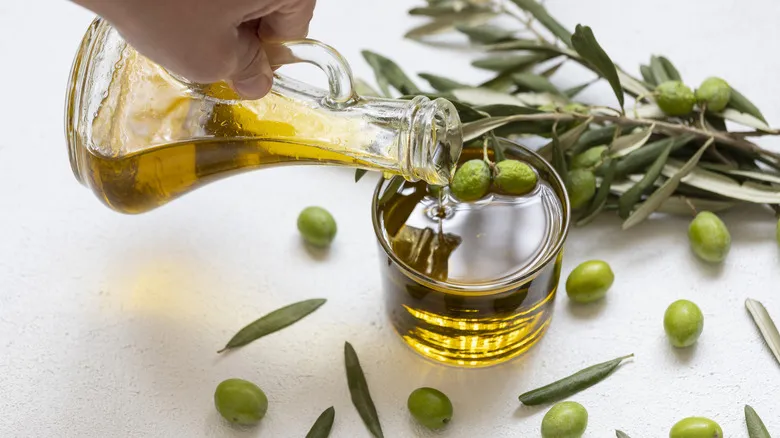
Olive oil enhances nearly any dish, including simple steamed rice. Adding a drizzle to your rice cooker elevates the rice's flavor, introducing subtle nutty notes. It also prevents the rice from clumping together while improving its moisture and texture. This oil pairs well with seasonings, such as garlic, in flavored rice recipes.
In this instance, a small amount of olive oil makes a significant difference. The ideal ratio is half a teaspoon of olive oil for every half cup of rice. A pinch of salt in the cooking water can enhance the flavor even more, though it can be omitted for those on a low-sodium diet. The rice should cook for about 20 minutes in the rice cooker, followed by an additional five minutes of resting time before serving. In summary, olive oil is an easy way to enhance the flavor and texture of your rice without the need for extensive seasoning like you would use in seasoned rice.
Not browning the rice in a pan before steaming it
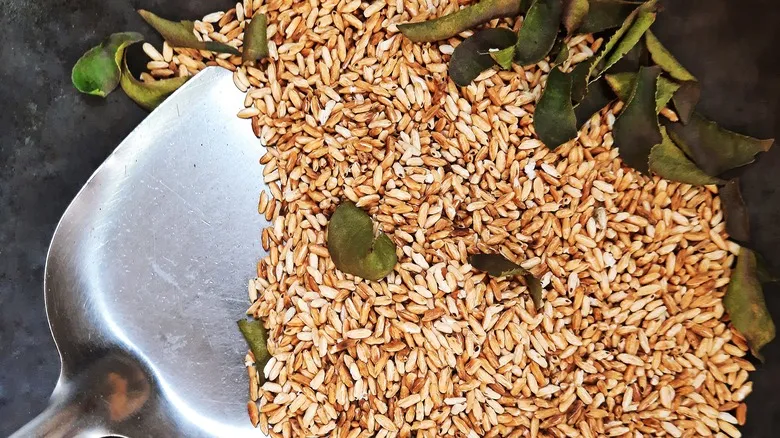
Although it may seem logical, the initial step in preparing steamed rice isn't to place the uncooked rice directly into the steamer. In fact, it shouldn't be. A more skilled rice cook will first drizzle a little oil into a wok or skillet, add the rice, and sauté it for five to seven minutes. An even more experienced chef might toss in some chopped onions or minced garlic to infuse the rice with additional flavor. Only after this step is the rice ready to be transferred to a rice cooker or a pot on the stove.
Browning the rice prior to cooking imparts a subtle nutty flavor that enhances the final dish. Once the rice is browned, it can be placed in your rice cooker (or a stockpot if you're preparing a rice-based soup). To ensure the rice is of the best quality, be sure to rinse it before browning to remove any debris or dust that could compromise its flavor. Browned rice pairs wonderfully with dishes such as a salmon poke bowl, roasted vegetables, or fried rice.
Cooking brown and white rice the same way
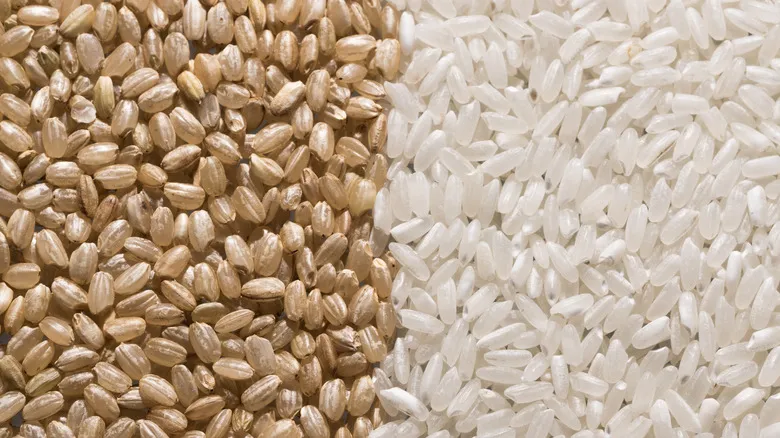
Most rice enthusiasts are aware that brown and white rice are distinct, and this difference becomes especially clear when attempting to cook both varieties using the same method. The key distinction in cooking lies in the hull that remains on brown rice.
Brown rice is a whole grain that retains a fiber-rich outer layer. This brown coating contributes to its chewier texture and nuttier flavor compared to white rice. Additionally, this outer layer is why brown rice requires a longer cooking time and more water than its white counterpart.
There’s a straightforward method for cooking white rice known as the one, two, three method, which does not apply to brown rice. This method indicates that one cup of uncooked white rice needs two cups of water and yields three cups of cooked rice. In contrast, brown rice requires approximately two and a half cups of water for the same amount of uncooked rice and takes about 45 to 55 minutes to cook on the stove, while white rice typically cooks in around 30 minutes. Given these differences, it’s clear that cooking both types of rice simultaneously is not advisable, even if you’re tempted to combine them in the same dish. For optimal results, cook them separately and using their respective methods.
Not allowing rice to cool before making fried rice
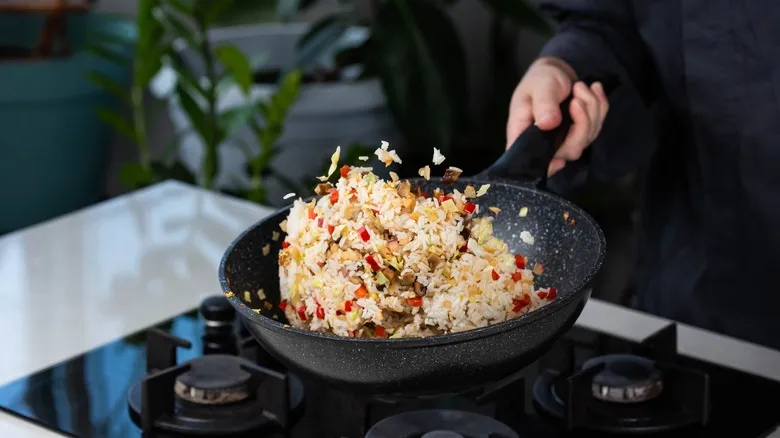
When preparing fried rice at home, it might be tempting to take freshly steamed rice directly from the rice cooker and throw it into the wok. However, exercising a bit of patience can significantly enhance your fried rice. Surprisingly, the best fried rice is not made with freshly cooked rice. Instead, chilling the rice and allowing it to dry out slightly yields superior results. This drying process helps prevent clumping, as the rice has more space to breathe. This phenomenon is known as retrogradation, where soft rice recrystallizes as it cools, resulting in a less lumpy texture.
That said, you can still use freshly steamed rice for fried rice, but you'll need to take some precautions to reduce its moisture content. Spreading the rice out on a baking sheet for a while allows excess moisture to evaporate, and using a fan can expedite this process. Alternatively, you can save time and effort by setting aside some of your steamed rice the next time you cook it and letting it sit in the fridge overnight before making fried rice. By regularly doing this, you'll begin to view leftover rice in a whole new light.
Not rubbing down your rice mold with broth
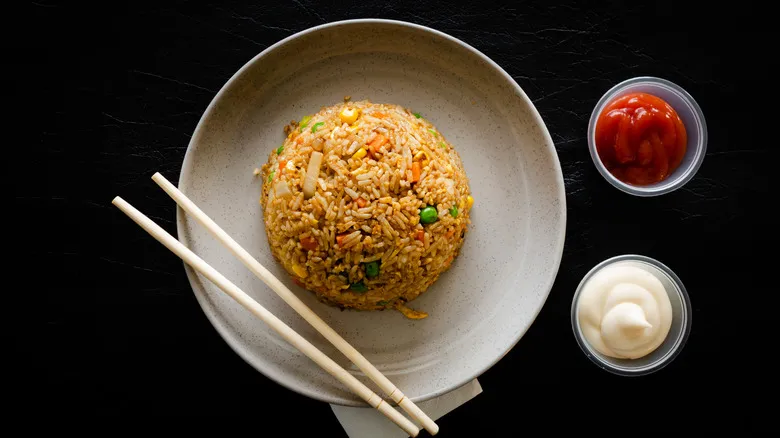
Perfectly shaped domes of fried or steamed rice aren't exclusive to local Chinese restaurants; you can create them at home with this simple technique. To get started, you'll need a small, round soup bowl and some fatty broth (you can use broth from boiled chicken or beef).
Begin by dipping a corner of a paper towel into the fatty broth and rubbing it around the inside of the bowl. Then, fill the bowl with rice and use a spatula to flatten the rice, ensuring the top is smooth and level with the rim of the bowl. Next, place a plate over the bowl's opening, flip the bowl and plate upside down, and gently slide the rice out onto the plate. The fatty broth will help prevent the rice from sticking, resulting in a beautiful dome shape. For added flavor, you can drizzle a little of the broth over the top of the rice.
Only using your rice cooker to cook rice
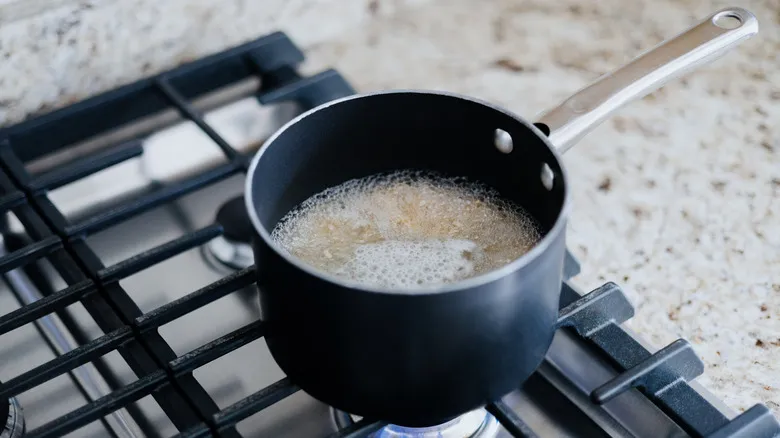
While rice cookers certainly make preparing a batch of steamed rice quick and convenient, they aren't the only option available for cooking rice. If you find yourself without a rice cooker, a pot, some water, and a stove can work just as well. However, it's important to approach cooking rice in a pot differently than you might think. Instead of trying to replicate a rice cooker, treat the pot and rice as if you were cooking pasta.
Start by filling the pot with rice and enough water to allow it to boil freely, just like pasta in boiling water. Your goal isn't to create a solid block of steamed rice, but rather to achieve a loose and fluffy texture as it cooks. Cooking times can vary, but a good guideline is to reduce the time by three to five minutes compared to what you would use in a rice cooker, checking for doneness periodically. You can cover the pot with a lid, but be sure to stir occasionally to prevent sticking.
Once the rice reaches your desired texture, pour it into a colander in the sink and let it drain for a few moments. Fluff it with a fork, season to taste, and serve as you normally would.
Starting with unwashed rice

You probably don’t picture rocks, tiny beetles, dust, and plant oils when you grab a bag of rice from the store, but any of those could be present in a typical bag. If you’ve ever skipped rinsing your rice before cooking, you might now see why it’s a good practice. Dirt combined with rice oils is definitely unappetizing.
Generally, rice should be rinsed under running water for a few minutes. Place it in a bowl or the pot you plan to use for cooking and fill it with water. As you wash the rice, the water will become cloudy. Regularly drain the dirty water and replace it with fresh water. Continue rinsing until the water runs clear and the cloudiness is gone.
However, there are exceptions to this guideline. Certain rice types and recipes don’t require rinsing. Washing the rice can alter the starch content, which may affect the flavor of the dish. Some recipes actually benefit from the extra starch. For instance, risotto should not be rinsed, while sushi rice does need to be washed. If this all feels a bit confusing, just check the recipe to see if rinsing is necessary, and you should be fine with your rice dishes.
Avoiding the microwave
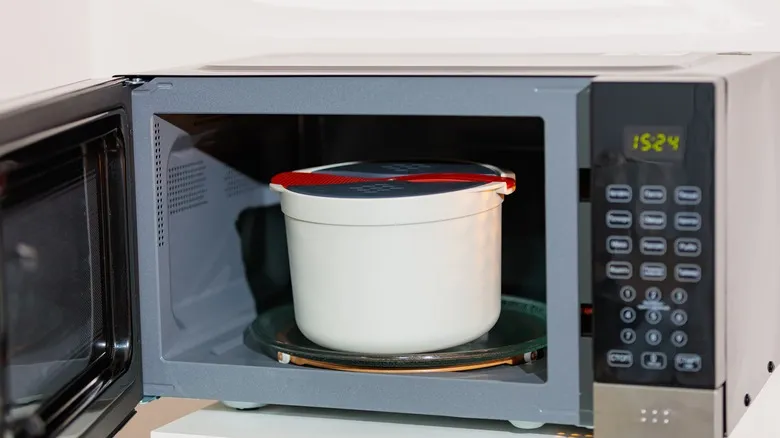
If you're pressed for time and have a surplus of uncooked dry rice, the microwave can be your best friend. While it may not be the best option for baked potatoes, it excels at cooking rice. Simply cook the rice long enough for it to absorb all the water. For white rice, a two-to-one water-to-rice ratio is ideal—use two cups of water for every cup of rice. If you're cooking a larger quantity, just adjust the proportions accordingly. For brown rice, increase the water slightly, using a one-to-two-and-a-half cup ratio instead of the two-to-one ratio for white rice.
To prepare the rice, rinse it as you normally would, then place it in a microwave-safe dish with a lid and set the timer. Cooking times can vary based on factors like your microwave's brand and your altitude, so you may need to adjust accordingly. Start with 12 to 15 minutes of cooking time. If the water hasn't fully absorbed into the rice, add small increments of time until it's cooked to your liking. Once the rice reaches the desired texture, let it rest for five to ten minutes before serving.
Not fluffing it up with a fork when it's done
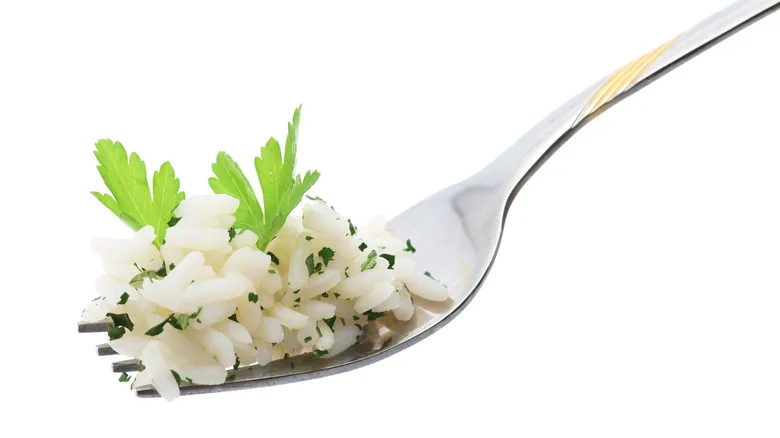
Cooked rice can often be quite sticky, and unless you're intentionally preparing sticky rice for a specific dish, it's advisable to reduce its glue-like properties before serving. Typically, a good fluffing will help eliminate clumps and stickiness.
However, using a spoon to fluff the rice can actually damage it, as it may break the grains apart or turn them into a paste. Instead, it's more effective to use a fork, as the tines can easily separate the grains without crushing them. This method results in fluffier rice without the clumps.
For optimal results, allow the rice to rest in the rice cooker for about five to ten minutes before fluffing. To do this, partially lift the lid so it rests slightly askew on the cooker. This allows any remaining water to be absorbed by the grains and gives the rice a chance to cool, preventing it from becoming a sticky mess when you fluff it.
Preparing rice and chicken separately

For many individuals, the rice cooker is the go-to appliance for achieving perfectly steamed rice. However, its capabilities extend far beyond just cooking rice. For those who enjoy one-pot meals, it serves as a versatile tool for preparing a variety of dishes beyond rice.
For instance, you can easily cook chicken and rice together. To begin, add uncooked white rice along with water or chicken broth to the rice cooker. Place two or three chicken thighs on top of the rice, along with your choice of seasonings. Flavorings such as garlic, basil, soy sauce, rosemary, ginger, and thyme complement the chicken-and-rice combination beautifully. Once all the ingredients are in the pot, it’s a simple matter of setting it and forgetting it. The entire meal will take about 15 to 20 minutes to cook, though the exact time may vary depending on your specific rice cooker model. When it’s finished, you can garnish it with green onions or cilantro and drizzle with your favorite sauce.
Making reheating leftover rice difficult
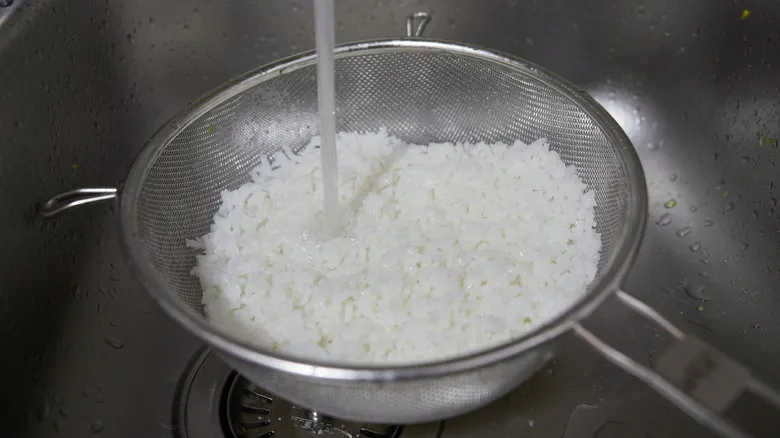
When it comes to reheating leftover rice, who says you’re out of options just because you don’t have a microwave? A simple, budget-friendly solution is right in your kitchen, just beneath the faucet. With a metal strainer or colander and a few minutes to spare, you can harness the power of hot water. That’s right—just a little hot water and some patience is all you need.
To warm up your rice using this method, start by placing your leftover rice in a colander. Position it under the faucet and let hot water flow through the rice. Using a fork to stir will help eliminate any cold spots. If you place a large bowl beneath the colander, you can pour hot water over the rice a second time to ensure it’s thoroughly heated. Allow the process to continue for a few minutes until the rice is hot throughout. Once done, let the rice sit for a moment to drain completely before serving.
Recommended
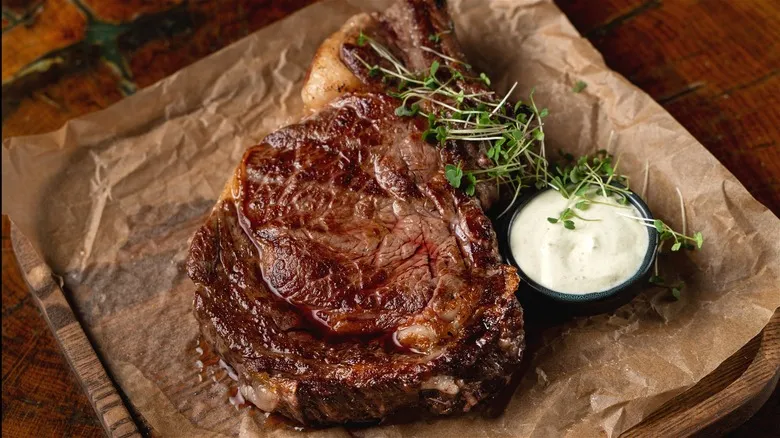
The Secret To Getting A Perfect Crispy Crust On Frozen Steaks
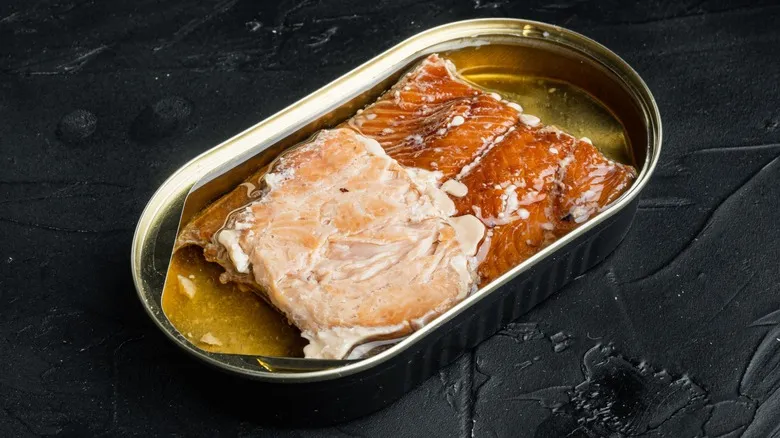
The Underrated Canned Fish Dip You Need To Start Eating With Potato Chips
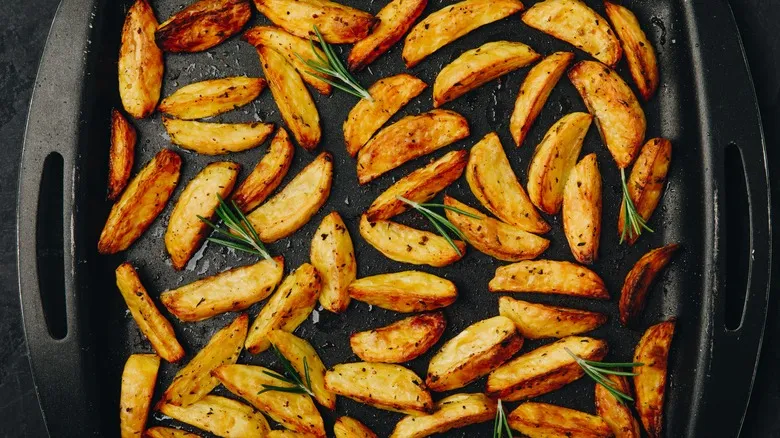
Make Baked Steak Fries As Crispy As Deep Fried With One Extra Ingredient

Upgrade Your Store-Bought Veggie Burgers With This Chef-Approved Tip
Next up

